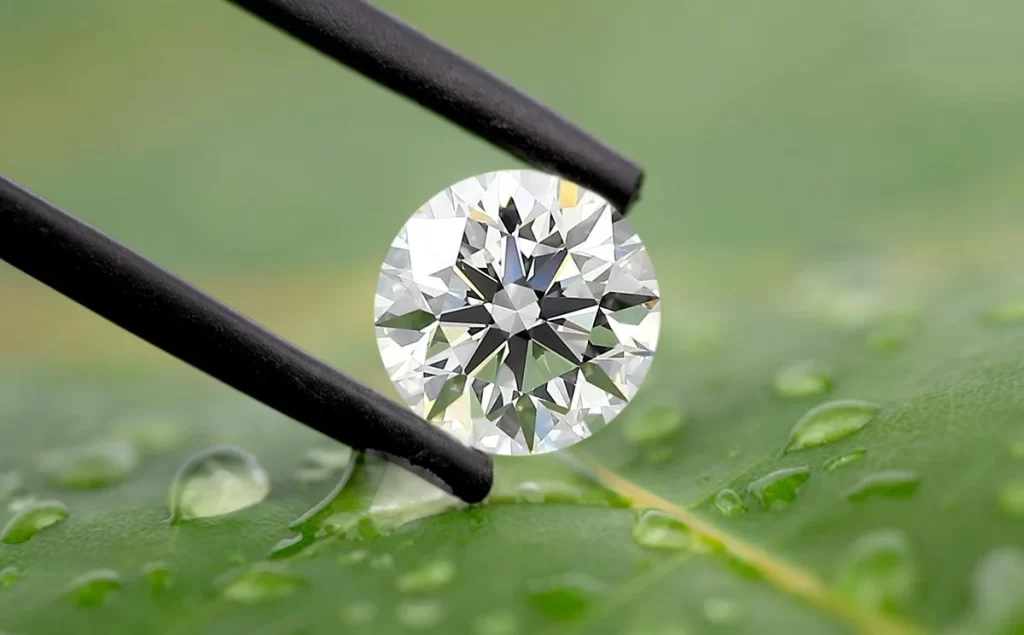Table of Contents
Introduction to Lab Grown Diamonds
Lab grown diamonds are revolutionizing the world of gemstones. Unlike traditional diamonds formed over millions of years beneath the Earth’s surface, lab grown diamonds are created in a controlled environment. But what exactly are they, and why should you care?
What Are Lab Grown Diamonds?
Lab grown diamonds are real diamonds, chemically and physically identical to natural ones. They’re not cubic zirconia or moissanite but diamonds created through advanced technology in laboratories. These diamonds are essentially “man-made” but possess the same brilliance and durability as those formed naturally.
How Are Lab Grown Diamonds Made?
Understanding the production process can be as fascinating as the diamonds themselves. There are two primary methods for creating lab grown diamonds:
High Pressure High Temperature (HPHT) Method
This method mimics the natural conditions under which diamonds form. By applying extreme pressure and temperature to a carbon source, diamonds crystallize in a laboratory environment. It’s like recreating the Earth’s inner core in a lab!
Chemical Vapor Deposition (CVD) Method
CVD involves placing a carbon-rich gas in a chamber where it’s ionized, allowing carbon atoms to settle and form diamond crystals. It’s a bit like cooking a diamond in a high-tech oven, where the right conditions lead to the creation of a gemstone.
Lab Grown Diamonds vs. Natural Diamonds
When comparing lab grown diamonds to natural diamonds, it’s important to consider several factors.
Physical Differences
In terms of appearance, lab grown and natural diamonds are virtually indistinguishable to the naked eye. Both types exhibit the same sparkle and clarity. The real difference lies in their origins and the way they are formed.
Cost Comparison
Lab grown diamonds typically cost 20-40% less than natural diamonds. Why? Because lab grown diamonds are less expensive to produce and don’t require the mining process, which can be costly and environmentally damaging.
Why Are Lab Grown Diamonds More Affordable?
The primary reason for the lower cost is that lab grown diamonds avoid the significant expenses associated with mining. Furthermore, the controlled environment of lab production leads to fewer imperfections, often resulting in a higher quality product at a lower price.
Ethical and Environmental Considerations
Lab grown diamonds come with fewer ethical concerns. Mining natural diamonds can lead to environmental degradation and human rights issues. Lab grown diamonds offer a more sustainable and ethical alternative, which appeals to many conscious consumers.
Benefits of Choosing Lab Grown Diamonds
Choosing a lab grown diamond can be an excellent decision for several reasons.
Environmental Impact
Lab grown diamonds are significantly better for the planet. They reduce the need for mining, which can cause deforestation and habitat destruction. By opting for these diamonds, you contribute to lessening the environmental footprint of gemstone production.
Quality and Purity
Lab grown diamonds often exhibit fewer inclusions and can be of higher clarity than natural diamonds. Advances in technology mean that these diamonds can be crafted to meet specific requirements, including size and shape.
Customization Options
One of the perks of lab grown diamonds is the ability to customize them according to personal preferences. From cut to carat weight, you can often get a diamond that perfectly fits your vision.
Value for Money
Given their lower cost and high quality, lab grown diamonds offer incredible value for money. You can get a larger or higher-quality diamond for the same price as a smaller, lower-quality natural diamond.
How to Buy Lab Grown Diamonds
If you’re considering buying a lab grown diamond, here are some tips to guide you through the process.
Choosing a Reputable Supplier
Not all suppliers are created equal. Look for a reputable dealer with positive reviews and transparent practices. Ensure they provide certification for their diamonds, so you know you’re getting a genuine product.
Understanding Certification and Grading
Diamonds are graded based on the Four Cs: Carat weight, Cut, Color, and Clarity. Lab grown diamonds are graded in the same way, so understanding these factors can help you make an informed purchase.
The Four Cs of Diamonds
- Carat Weight: This refers to the size of the diamond.
- Cut: This affects the diamond’s brilliance.
- Color: Ranges from colorless to yellow or brown.
- Clarity: Indicates the presence of internal or external imperfections.
Setting and Style Options
Lab grown diamonds come in various settings and styles, just like natural diamonds. Whether you prefer a classic solitaire or a modern halo setting, there are countless options to choose from.
The Future of Lab Grown Diamonds
The future of lab grown diamonds looks bright. Advances in technology continue to improve their quality and reduce production costs.
Technological Advancements
New technologies are being developed to enhance the diamond-growing process, making it even more efficient and precise. These advancements promise to bring even more exciting possibilities to the market.
Market Trends
As consumer awareness of ethical and environmental issues grows, lab grown diamonds are becoming more popular. This trend suggests that lab grown diamonds will play an increasingly significant role in the jewelry market.
Conclusion
Lab grown diamonds represent a blend of technology, ethics, and beauty. They offer a stunning, environmentally friendly alternative to natural diamonds. With their affordability, high quality, and ethical benefits, they’re an attractive choice for many consumers. Whether you’re shopping for an engagement ring or a special piece of jewelry, lab grown diamonds are worth considering.

